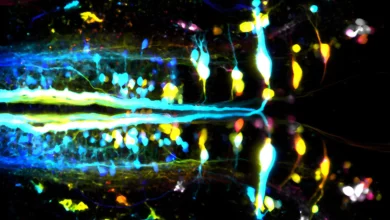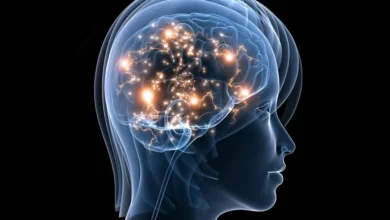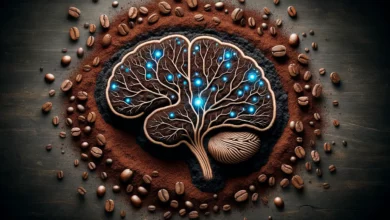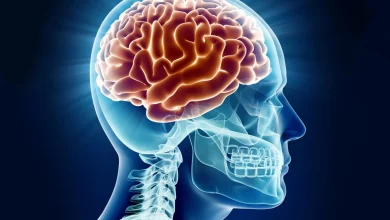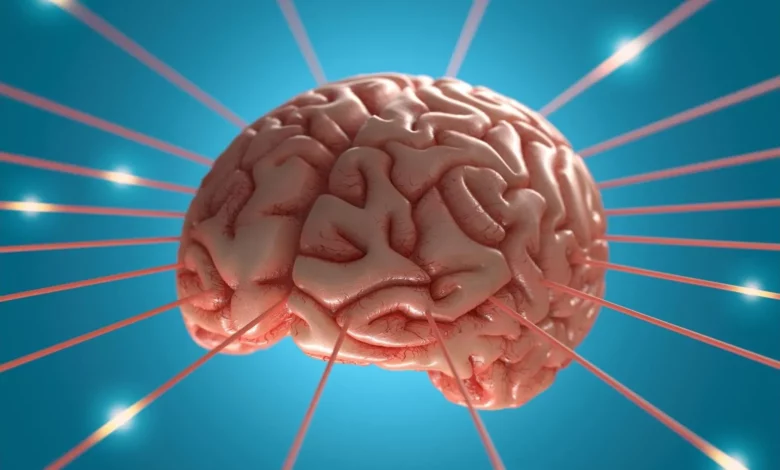
Lead Image: Neurodegenerative diseases are conditions that affect the functioning of the brain and nervous system, leading to the progressive loss of structure or function of nerve cells. Some examples of neurodegenerative diseases include Alzheimer’s disease, Parkinson’s disease, and multiple sclerosis. These diseases can cause problems with memory, movement, and overall brain function, and they often get worse over time.
The findings in mice suggest a new therapeutic approach to treating Alzheimer’s and other age-related diseases.
Many neurodegenerative diseases, including Alzheimer’s and Parkinson’s, are characterized by the presence of harmful protein clusters in the brain. Despite significant efforts to find ways to treat these conditions by removing these toxic clusters, progress has been limited.
Researchers at the Washington University School of Medicine in St. Louis have discovered a new way to improve the removal of waste from the brain, which may potentially lead to the treatment or prevention of neurodegenerative diseases. They discovered that immune cells surrounding the brain play a role in the efficiency of waste removal and that these immune cells are impaired in old mice, as well as in humans and mice with Alzheimer’s disease. Additionally, they found that treating old mice with an immune-stimulating compound can rejuvenate these immune cells and improve waste clearance from the brain.
The findings recently published in the journal Nature, suggest a new approach to halting some of the effects of aging on the brain.
“Alzheimer’s has been studied for many years from the perspective of how neurons die, but there are other cells, such as immune cells on the periphery of the brain, that also may play a role in Alzheimer’s,” said senior author Jonathan Kipnis, Ph.D., the Alan A. and Edith L. Wolff Distinguished Professor of Pathology & Immunology and a BJC Investigator. “It doesn’t look likely that we will be able to revive dead or dying neurons, but the immune cells that sit on the borders of the brain are a feasible target for treating age-related brain diseases. They’re more accessible and could be drugged or replaced. In this study, we treated aged mice with a molecule that can activate aged immune cells, and it worked in improving fluid flow and waste clearance from the brain. This holds promise as an approach to treating neurodegenerative diseases.”
Kipnis is an expert in the blossoming field of neuroimmunology, the study of how the immune system affects the brain in health and disease. In 2015, he discovered a network of vessels that drains fluid, immune cells, and small molecules from the brain into the lymph nodes, where many immune system cells reside. Last year, he and colleagues showed that some investigational Alzheimer’s therapies are more effective in mice when paired with a treatment geared toward improving the drainage of fluid and debris from the brain.
For this study, Kipnis and Antoine Drieu, Ph.D. — a postdoctoral researcher and the paper’s lead author — set out to understand the role played by the immune cells that live along the brain’s vasculature and in the leptomeninges, the tissues immediately surrounding the brain and spinal cord. They termed these cells parenchymal border macrophages because they sit at the interface between cerebrospinal fluid and brain tissue.
Studying mice, Kipnis, Drieu, and colleagues discovered that such macrophages regulate the motion of blood arteries that, in turn, controls the cleansing flow of fluid through the brain. When these macrophages were depleted or impaired, debris built up in the brain.
“Cerebrospinal fluid flow is impaired in numerous neurodegenerative diseases, such as Alzheimer’s, stroke, Parkinson’s, and multiple sclerosis,” Drieu said. “If we can restore fluid flow through the brain just by boosting these macrophages, maybe we can slow the progression of these diseases. It’s a dream, but who knows? It might work.”
Further investigation revealed that parenchymal border macrophages are altered in people with Alzheimer’s disease and mice with an Alzheimer’s-like condition: The immune cells are less able to consume and dispose of waste, and cannot efficiently regulate fluid flow.
Starting at about age 50, people start experiencing a decline in brain fluid flow as part of normal aging. The same thing happens in older mice. Kipnis, Drieu, and colleagues showed that the kind of border macrophage most important for waste clearance and fluid flow is scarce in older mice. When they treated old mice with a protein that boosts macrophage activity, the border macrophages started behaving more like those from younger mice. Further, the treatment improved fluid flow and waste clearance from the mice’s brains.
“Collectively, our results show that parenchymal border macrophages could potentially be targeted pharmacologically to alleviate brain clearance deficits associated with aging and Alzheimer’s disease,” said Kipnis, who is also a professor of neurology, neuroscience, and neurosurgery. “I am discussing with colleagues how we can replace or rejuvenate those cells in aging brains and as a treatment for Alzheimer’s. I hope that one day we will be able to slow down or delay the development of age-related brain diseases with this approach.”
Reference: “Parenchymal border macrophages regulate the flow dynamics of the cerebrospinal fluid” by Antoine Drieu, Siling Du, Steffen E. Storck, Justin Rustenhoven, Zachary Papadopoulos, Taitea Dykstra, Fenghe Zhong, Kyungdeok Kim, Susan Blackburn, Tornike Mamuladze, Oscar Harari, Celeste M. Karch, Randall J. Bateman, Richard Perrin, Martin Farlow, Jasmeer Chhatwal, Dominantly Inherited Alzheimer Network, Song Hu, Gwendalyn J. Randolph, Igor Smirnov and Jonathan Kipnis, 9 November 2022, Nature.
DOI: 10.1038/s41586-022-05397-3
The study was funded by the National Institute on Aging, the Cure Alzheimer’s Fund, and the Ludwig Family Foundation.
Kipnis directs a program supported by a $15 million grant from the National Institutes of Health (NIH) to explore how border macrophages and other immune cells interact with fluid flow and drainage in the brain to contribute to aging, as well as to Alzheimer’s disease and cerebral amyloid angiopathy — both of which are brain diseases that lead to dementia. The goal is to find novel therapies for neurodegeneration and age-related dementia. Co-investigators Gwen Randolph, Ph.D., the Emil R. Unanue Distinguished Professor of Immunology; Marco Colonna, MD, the Robert Rock Belliveau Professor of Pathology; and David Holtzman, MD, the Barbara Burton and Reuben M. Morriss III Distinguished Professor of Neurology, each lead projects within the larger program.


